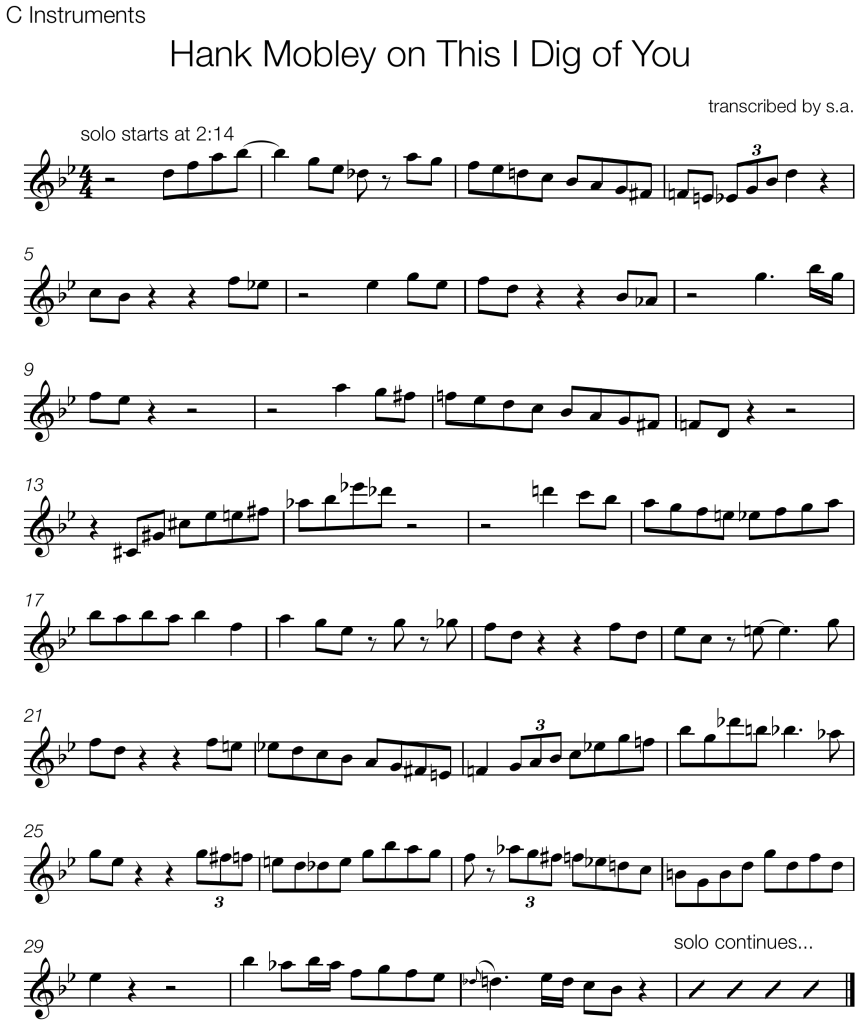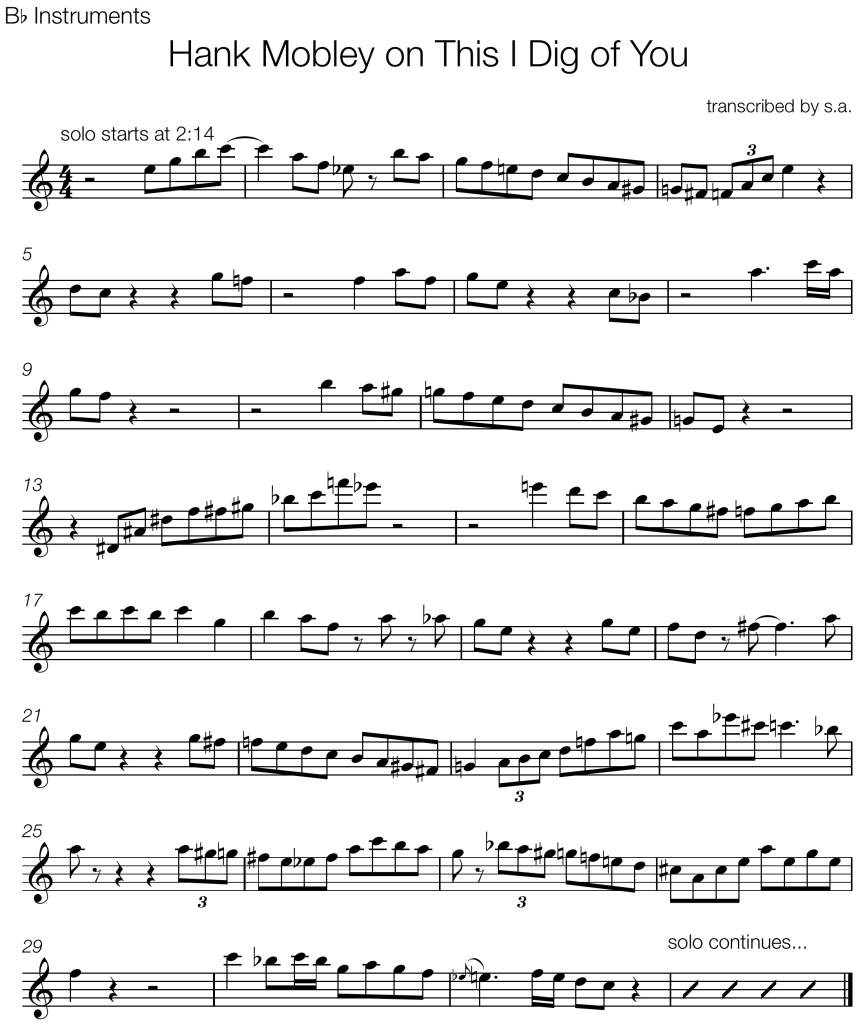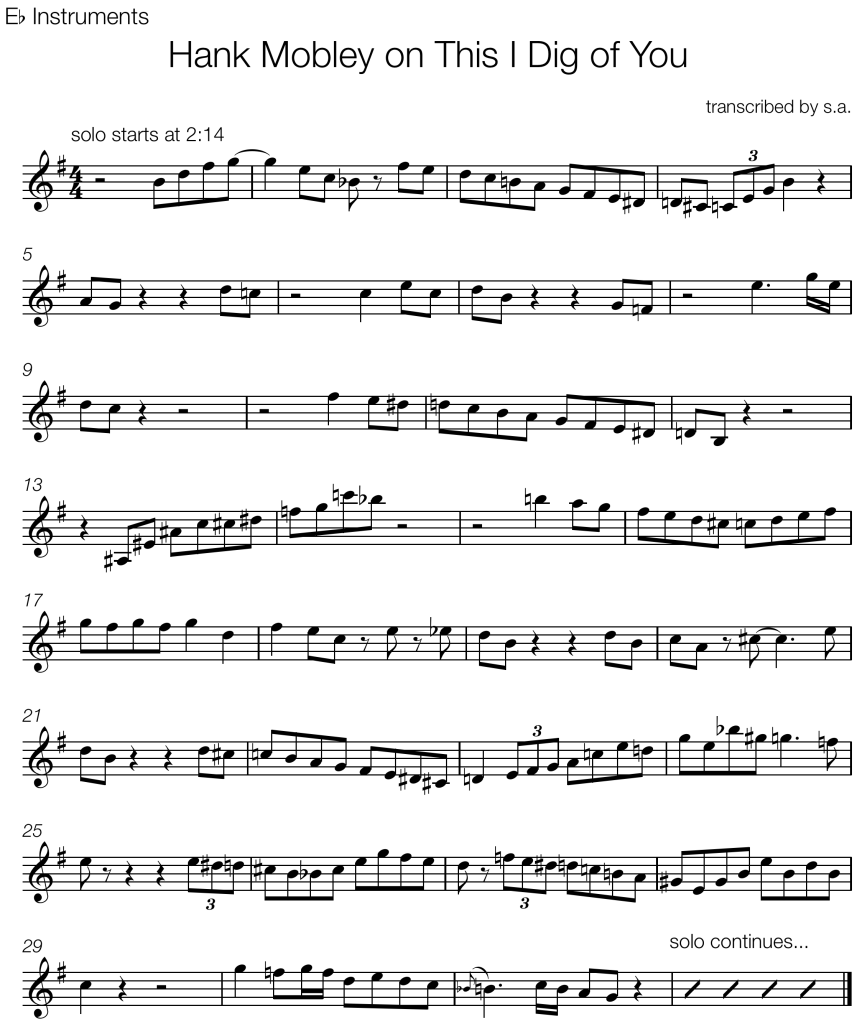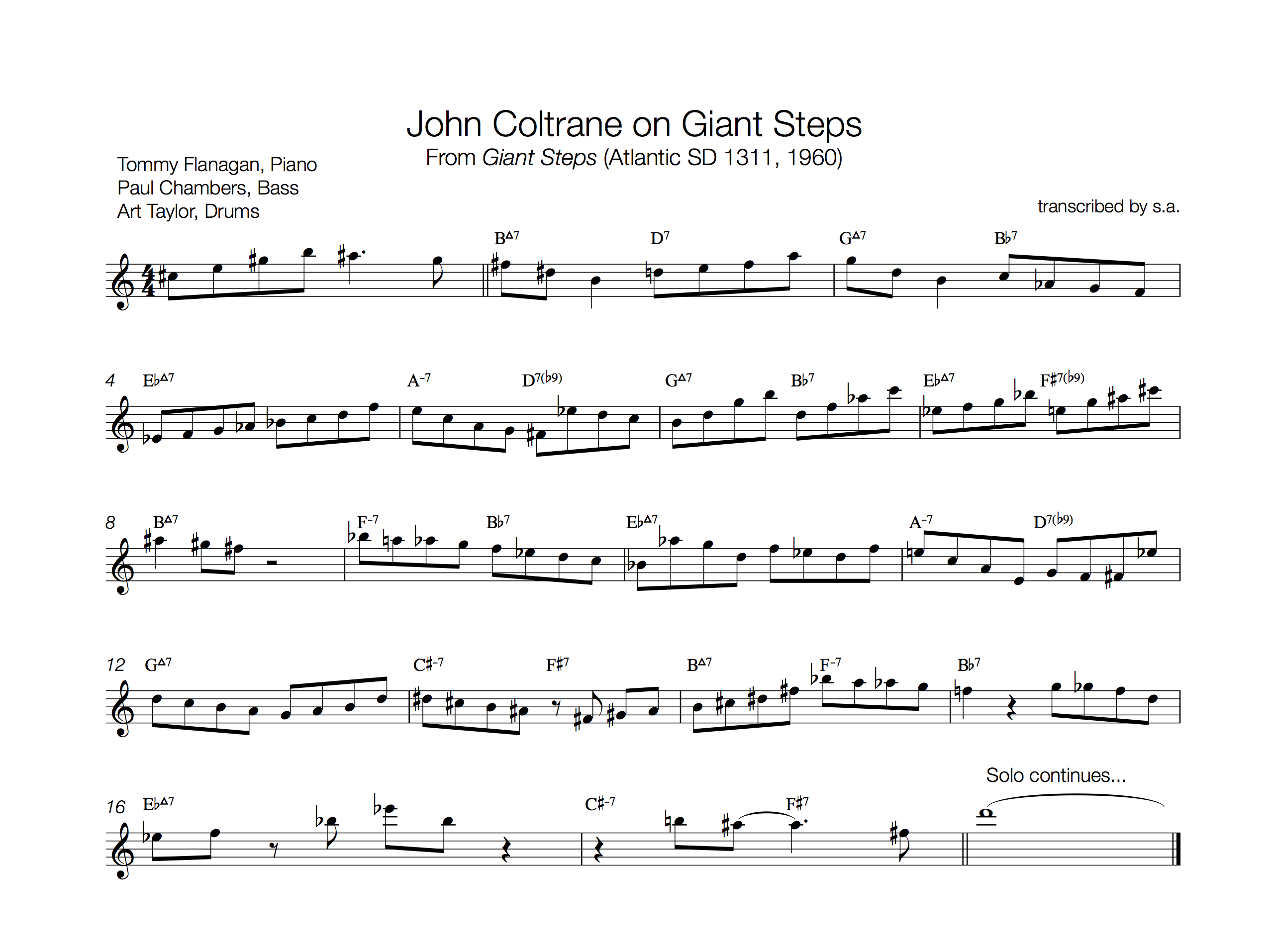Hank Mobley tends to be a polarizing figure. He was famously called the “middleweight champion of the tenor saxophone” by jazz critic Leonard Feather positioning him between “heavyweights” such as John Coltrane and Coleman Hawkins, and “tonal lightweights” like Stan Getz and his ilk.
Feather clarified his position in the 1968 Mobley bio for Blue Note:
Hank is the middleweight champion because his sound, as he once put it himself, is “not a big sound, not a small sound, just a round sound” and because, while fads and fancies change, he has remained for some 15 years a consistently successful performer, working almost exclusively as a sideman except on records, and retaining a firm, loyal following.
As I listened to Mobley for this transcription, the word that came to mind to describe his sound was unencumbered. Putting aside tonal characteristics, I find his vocabulary to be firmly based in the bebop idiom, rhythmically inventive, and original.
In his current Blue Note bio, Mobley is credited as a pioneer of the hard bop sound, described as “jazz that balanced sophistication and soulfulness, complexity and earthy swing,and whose loose structure allowed for extended improvisations.”
Applying those descriptors to Mobley’s sound seems fitting to me: sophisticated, soulful, complex, earthly, swinging.
Here is Hank Mobley soloing over his own composition, This I Dig Of You.




